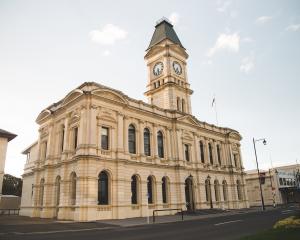Both the Waitaki District Council and the New Zealand Historic Places Trust said it was property owners' responsibility to ensure any old buildings or archaeological sites they planned to work on were not protected because of their age, even if not registered.
Last week, Webster and Mitchell called a halt to dismantling the tops of the two lime kilns so they could be cleared by an irrigator on its property at the Enfield end of Coalpit Rd, which is being converted to dairying.
That has led to an investigation by the Historic Places Trust, even though the company had resource consent for earthworks on the farm and the lime kilns were not registered by the trust or in the Waitaki District Council's district plan.
One kiln was built in 1898 and the second in 1900, by farmer William Meek to burn lime for his farm and to sell.
Any item built before 1900 is automatically protected under the Historic Places Act.
Webster and Mitchell representative Nick Webster said this week the two kilns had been partly dismantled so an irrigator could cross over them. He estimated more than 75% of the structures remained.
Work stopped last Wednesday, as soon as the company became aware the kilns were protected.
The company had applied to the council for resource consent, which was granted on January 15. The kilns were not listed among the Waitaki district plan's heritage items, or with the trust.
''We were not aware they were built before 1900. We also weren't aware that anything built before 1900 was automatically protected.''
The company ''did its homework prior to dismantling'' and believed it was not doing anything wrong.
''It's one of those unfortunate situations where information wasn't quite what we believed. There are rules out there, but they are not there in black and white and well known.
''We were just taking a bit off the top of them. It was never our intention to demolish them,'' Mr Webster said.
Council chief executive Michael Ross said the council was not aware the work on the farm would affect the kilns.
There was no listing or detail for them.
Under the Historic Places Act, anything pre-1900 would need authority from the Historic Places Trust if they were to be modified, damaged or destroyed.
Asked what the council could do now, Mr Ross said that, from a regulatory point of view, it had no powers.
However, it could promote public awareness about the importance of heritage values.
Trust senior legal adviser Geraldine Baumann said a report was being prepared on the damage to the kilns.
At this stage, she could not comment on what action may be taken, including the option of rebuilding the kilns.
It was not known when the report would be completed.
The kilns were examples of archaeological sites, and therefore protected, being pre-1900.
''It is the landowner's responsibility [to ensure a site is not protected], or the person who wants to damage, modify or destroy a site, and an archaeological authority is required in these cases.''
Information on protection for sites and buildings is on the trust's website.










